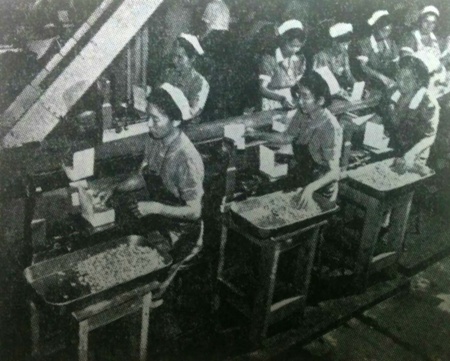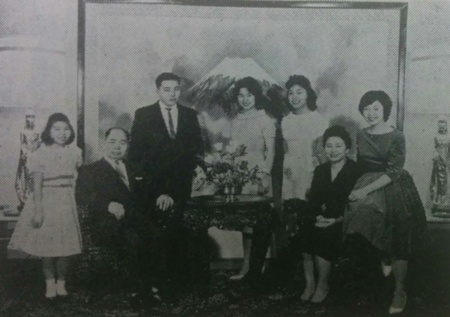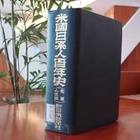I would also like to introduce Chapter 21, "New Jersey," and Chapter 22, "The New England States," which deal with Japanese Americans in the "Centennial History."
Regarding New Jersey, the book summarizes two points about the footsteps of Japanese Americans. The first is about early Japanese people, and the history of Japanese people in Atlantic City, famous for its casinos.
Bustling Atlantic City
In 1892, an American who was doing business in Kobe organized a caravan with several other Japanese people to demonstrate and sell Japanese arts and crafts, and after touring the US, he came to Atlantic City, where he disbanded and stayed until he opened a Japanese goods store.
Also, Kushibiki Yujin, known as an "exposition merchant" who was active in New York, started a business here as well. In 1895, he rented six acres of vacant land on the Atlantic City beach and created a large Japanese garden with the support of the Japanese Tea Industry Association. He ordered red-crowned cranes, temple bells from Kyoto, stone lanterns, and 20,000 Gifu lanterns from Japan, and opened the garden with great fanfare.
In 1899, Kushibiki and others created a tea garden occupying an entire block, kept cranes in the Japanese garden, had a large hanging bell imported from Japan, and served tea and sold Japanese goods, which became a huge success.
This prosperity of Japanese people was at its peak for about 10 years from 1900, when there were two or three Japanese stores on the boardwalk along the seafront, and the area was bustling. At that time, there were about 50 to 60 Japanese men, 15 women, and 10 children. After that, the big stores moved to New York, and the area fell into disuse.
Among these Japanese, Senoo Morizo from Okayama Prefecture became a naturalized U.S. citizen in 1902, the earliest such person to do so among Japanese people living in America.
Japanese Americans gather at Seabrook Farm
Another notable example of Japanese and Japanese-Americans in New Jersey is the large number of Japanese who gathered at a processing plant called Seabrook Farm during and after the war.
Seabrook Farm is located on the outskirts of Bridgeton, at the southern tip of New Jersey between New York and Philadelphia, and was a processing plant that froze and canned various kinds of vegetables. When this company suffered from a labor shortage during the war, they welcomed dexterous and hardworking Japanese immigrants as laborers, and many Japanese who were in internment camps in the West at the time came to work at the farm.
"Local relocation bureau offices also actively encouraged people to relocate to the farm, and at its peak in the summer of 1946, as many as 2,300 people had relocated there to work, creating what was at one time the largest Japanese village east of the Rocky Mountains. Even though the location had changed, Seabrook Japanese Village was said to still feel like an extension of the camp; it was one of the children of the war."
The Japanese Americans worked in a quick-freezing plant that was part of the farm. The first Japanese Americans to work there were 12 Nisei young men from the Amache Internment Camp in Colorado between January and February 1944.
Workers continued to be recruited through the Relocation Bureau, and many Japanese Americans came to the area from Jerome (Arkansas), Lower (Arkansas), Gila River (Arizona), Manzanar (California), Amache, Topaz (Utah), and Heart Mountain (Wyoming).
After the war, in 1946, families came from Tule Lake, California, and 200 Japanese-Peruvians who had been imprisoned in Crystal City, Texas, were released on bail and came to Seabrook.
Thus, Japanese villages were formed, Japanese people were employed in public facilities, and various Japanese-run stores were established and prospered. Christian and Buddhist churches were established, and various hobby groups and Japanese language schools also appeared. Japanese people on the plantations joined labor unions, but at first they found it difficult to get used to it. However, they gradually became more involved in union activities.
Seabrook Farm's population gradually declined as farm work was seasonal and wages were relatively low, with some people seeking employment in nearby factories or becoming independent farmers.
The Japanese population in New Jersey was 52 in 1900, 439 in 1930, and 3,514 in 1960.
Japanese Americans stand out in Boston
Among the New England states, the number of Japanese immigrants was low except in Connecticut, which is close to New York, and Massachusetts, where Boston is located. Population statistics show that in 1940 there were only six Japanese immigrants in Rhode Island, five in Maine, four in New Hampshire, and three in Vermont.
The earliest Japanese person to settle in Boston was a Nichiren Buddhist priest named Matsuki, around 1890. He married a white man and opened an Oriental art store. Next came a Japanese painter named Ishikawa Shunsui. Yamanaka Shokai, which had its head office in Osaka and a branch in New York, opened a store in Boston in 1898. After that, several Japanese firms operated in the city.
Around 1910, Japanese people opened Western-style restaurants at the Chalstaon Navy Yard on the outskirts of Boston. Many Japanese cooks and waiters who worked on transport ships and other vessels frequented the naval yard, and there were also lodgings and restaurants to cater to them. In addition, there were around 150 Japanese people working in homes around the yard and Boston, many of whom were "studying abroad or former sailors."
In Boston, a mutual aid society called the Japanese Mutual Aid Association was founded in 1915, which took care of sick and deceased people for a yearly membership fee of $10. This developed into the Boston Japanese Association, which continued to exist until the deterioration of Japanese-American relations.
Boston is also a university town, and many Japanese students came to Boston from abroad, so around 1905 a social club called the Naniwa Club was formed by Japanese students and Americans. This later became the Japan Society.
Around 1935, the various groups were unified to form the Japanese Association, which continued to introduce Japanese culture until the outbreak of the war. Although key figures were detained immediately after the war, the general public's feelings towards Japan were generally positive. After the war, the Japan Society was reopened in 1952.
Attempts have also been made to cultivate oysters and eels.
Around 1910, there were significant numbers of Japanese working as sailors, cooks, and waiters in port towns such as Bridgeport, New Haven, Newport, and New Bedford, which are scattered along the coastline from New York to Boston.
"A small number of people along these coasts engaged in fishing or attempted oyster and eel farming, but those involved in the fishing industry were interned when war broke out between Japan and the United States. Even after their release, very few returned to their professions, and oyster and eel farming did not achieve success."
In Sanford, Connecticut, there were Japanese people working in Western restaurants and nurseries. Nojima Junzo (from Kagoshima Prefecture) opened a successful Western restaurant here, and became famous when he donated 200 Japanese cherry trees to a local park. In the neighboring city of Norwalk, Sasaki Naohiro (from Ehime Prefecture) opened a successful Western restaurant and invested a huge amount of money to create a Japanese-Western style garden, which also had double cherry blossoms and became popular with Americans as an Oriental garden.
(Note: I have used the original text as much as possible, but have made some edits. Titles have been omitted.)
*Next time we will introduce " Japanese Americans in the Mid-Atlantic States and Pennsylvania ."
© 2015 Ryusuke Kawai








